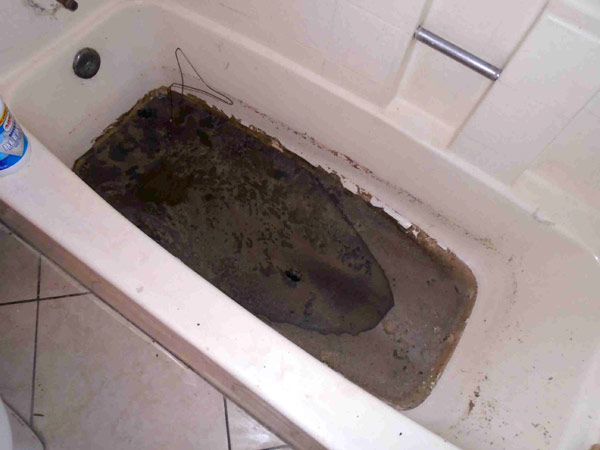Unpacking the Mystery of Discharge in the Bathtub
Unpacking the Mystery of Discharge in the Bathtub
Blog Article
Listed here underneath you'll find additional professional details pertaining to Why sewage is coming up through your bathtub.

Sewer backup in the bath tub can be a stressful and unsanitary problem for any kind of homeowner. Not only is it bothersome, but it likewise presents major wellness dangers and shows underlying concerns with the plumbing system. Recognizing why sewage is showing up through the tub is critical for taking proper action to address the trouble successfully.
Introduction to the Concern
Recognizing the Trouble
When sewer draws back up right into the bathtub, it's a clear indicator of a problem with the drainage system. The wastewater that needs to be flowing far from your home is rather locating its back right into your living space, which can bring about significant damages and carcinogen.
Potential Causes
Numerous elements can add to sewage backup in the bathtub. From clogs in the sewer line to issues with the plumbing framework, identifying the source is vital for finding a solution.
Usual Factors for Sewage Back-up
Obstructions in the Sewer Line
One of one of the most usual reasons for sewer back-up is an obstruction in the sewage system line. This can happen because of the buildup of debris, grease, or foreign items in the pipelines, protecting against correct circulation and triggering sewer to support right into your tub.
Tree Origin Breach
Tree roots seeking moisture and nutrients can penetrate sewage system lines through small splits or joints. With time, these roots can expand and expand, creating significant damages to the pipes and leading to sewer back-up problems.
Aging Facilities
Older homes might have dated plumbing systems that are a lot more vulnerable to corrosion, fractures, and deterioration. As pipelines age, they end up being extra susceptible to leakages and obstructions, raising the possibility of sewage backup cases.
Heavy Rainfall or Flooding
Throughout periods of heavy rainfall or flooding, the drain system may become overloaded with excess water, triggering backups and overflows. This can cause sewage supporting right into tubs and other fixtures inside the home.
Health And Wellness Risks Related To Sewage Backup
Contamination of Supply Of Water
Sewage back-up can pollute the water supply in your home, positioning a severe wellness threat to you and your family. Exposure to polluted water can cause intestinal problems, skin infections, and other ailments.
Spread of Disease
Sewer consists of damaging bacteria, viruses, and bloodsuckers that can create a series of conditions, including hepatitis, cholera, and gastroenteritis. Coming into contact with sewage or infected surfaces puts you at risk of infection.
Mold Development
Wetness from sewage back-up can develop optimal problems for mold growth in your home. Mold and mildew spores can exacerbate breathing problems and cause allergies in delicate people, making timely cleanup essential.
Signs of Sewer Back-up
Foul Odors
Undesirable smells emanating from drains or components, specifically in the shower room, may indicate sewage back-up problems. These smells are typically solid and relentless, indicating a trouble that calls for prompt interest.
Slow Draining Fixtures
Bathtubs, sinks, and toilets that drain gradually or not in any way could be experiencing sewage back-up. If multiple components are impacted simultaneously, it's most likely that the problem stems from an usual point, such as the major sewage system line.
Gurgling Noises
Weird gurgling or gurgling sounds originating from drains pipes when water is running elsewhere in your house are indicative of air entraped in the plumbing system. This air build-up can arise from sewage backup and need to be explored promptly.
Immediate Actions to Take
Turning Off Supply Of Water
In the event of sewage back-up, it's necessary to switch off the water system to prevent further contamination and damage. Locate the primary water shutoff valve in your home and closed it off till the problem can be fixed.
Calling an Expert Plumber
Handling sewer backup is not a DIY task. Get in touch with a certified plumber with experience in taking care of sewage-related issues to assess the scenario and do needed fixings or clean-ups.
Staying Clear Of Contact with Contaminated Water
Until the sewage backup is dealt with, prevent contact with polluted water to prevent the spread of microorganisms and virus. Wear protective equipment if you need to remain in the damaged area and wash your hands extensively afterward.
Preventive Measures
Normal Upkeep of Sewer Lines
Schedule normal evaluations and upkeep of your sewage system lines to recognize and deal with prospective problems prior to they intensify into significant problems. This can include clearing out particles, examining for tree origin intrusion, and fixing any broken pipelines.
Mounting Backwater Shutoffs
Take into consideration installing backwater shutoffs in your plumbing system to prevent sewage from flowing back into your home throughout durations of heavy rainfall or flooding. These shutoffs immediately close when water draws back up, securing your residential property from contamination.
Proper Disposal of Family Waste
Avoid flushing anything other than toilet tissue and human waste down the bathroom to prevent blockages and obstructions in the sewage system line. Dispose of grease, oil, and other home chemicals properly to reduce the danger of plumbing problems.
Cleaning Up After Sewage Backup
Sanitation Procedures
Extensively decontaminate and disinfect influenced areas after sewage back-up to eliminate harmful germs and prevent mold and mildew development. Usage proper cleaning products and protective gear to guarantee safe and efficient cleaning.
Repair of Influenced Locations
Fix any type of damage to flooring, wall surfaces, or components triggered by sewer backup. Depending on the level of the damage, you might require to change carpeting, drywall, or various other products to restore your home to its pre-loss condition.
Why Is Water Backing Up in My Bathtub When I Flush My Toilet?
What to do about a sewer line clog
First, don’t bother with plunging. No amount of plunging will dislodge the clog in a sewer line. The clog is too far away. Plungers are for clogs in the toilet itself, not the sewer line. Plus, the most likely causes of a sewer clog are:
Tree roots Flushed toys or feminine products Grease buildup Those items don’t move easily. And in the case of tree roots, the roots need to be cut out of the pipe and the pipe will need to be repaired.
You’ll need a closet auger. A closet auger is a type of plumber’s snake with a protective cover to keep from scratching the delicate porcelain toilet. If the clog is further down, you may need to remove the toilet or use one of your cleanouts to get to the clog.
We also recommend doing a video inspection of the drain to ensure that the cause of the clog has been completely removed. Otherwise, you could have the same problem again in a few days or weeks.
https://mspplumbingheatingair.com/blog/why-is-water-backing-up-in-my-bathtub-when-i-flush-my-toilet

I was shown that editorial on What to Do if Sewage Starts Coming Up Through Your Bathtub through a good friend on another web address. Do you know somebody else who is intrigued by the subject? Take a moment to share it. I praise you for your time. Don't forget to stop by our blog back soon.
Schedule Free Estimate
Report this page